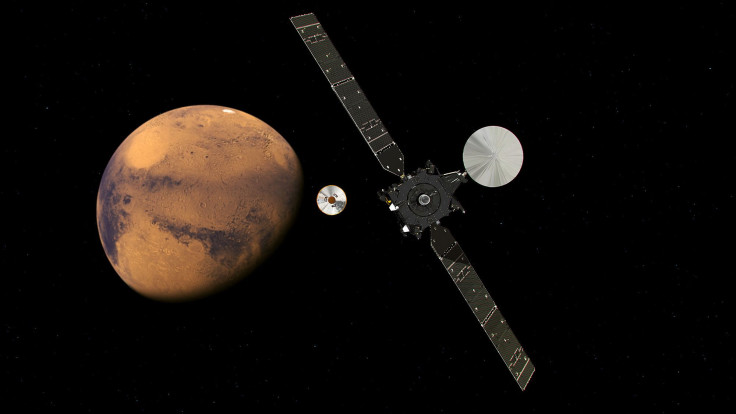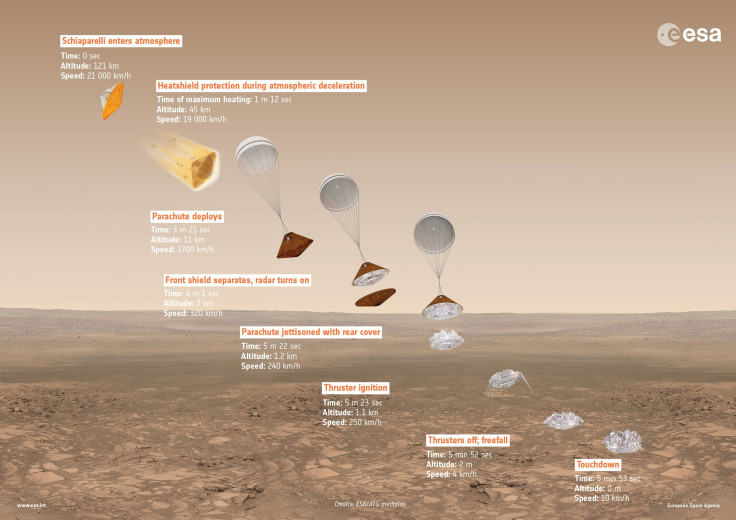ExoMars Arrival And Landing Live Stream: ESA-Roscosmos Spacecraft Approaches The Red Planet

ExoMars — a spacecraft sent to Mars as part of the first phase of a joint mission by the European Space Agency and Russia’s Roscosmos — is just days away from the red planet. The spacecraft, which consists of the Trace Gas Orbiter (TGO) and the Schiaparelli entry, descent and landing demonstrator, will enter into orbit around the red planet on Wednesday after a seven-month journey.
However, the lander's journey begins much sooner. At 10:42 a.m. EDT on Sunday, it will separate from the TGO, and head toward the surface of Mars — a journey that will take three days.
“They [the TGO and the Schiaparelli module] are now on a high-speed collision course with Mars, which is fine for the lander – it will stay on this path to make its controlled landing,” ExoMars flight director Michel Denis at mission control in Darmstadt, Germany, said in a statement Friday. “However, to get the mothership into orbit, we must make a small but vital adjustment on 17 October to ensure it avoids the planet. And on 19 October it must fire its engine at a precise time for 139 minutes to brake into orbit.”
The main objective of the ExoMars mission is to search for evidence of methane — a gas emitted by living microbes on Earth, and traces of which have been observed by previous Mars missions — and other trace atmospheric gases that could be signatures of active biological or geological processes.
In addition, the mission would also lay the groundwork and test technologies for the next phase of the ExoMars mission, which aims to land a rover on Mars. So far, only four rovers — Sojourner, Spirit, Opportunity and Curiosity, all sent by NASA — have successfully landed on Mars.
If Schiaparelli lands on the Martian surface, it would mark the first successful European attempt to land a probe on the red planet. Prior to this, the closest Europe came to a successful mission was in 2003, with the attempted landing of the U.K.’s Beagle 2.

“It is very important that it goes right. It will be the first successful Mars landing for Europe. We have to keep a cool head,” Denis said.
Schiaparelli will target a relatively flat area in Meridiani Planum, close to the Martian equator in the southern hemisphere.
Here’s a brief timeline of the events so far, and those yet to happen:
March 14: The ExoMars spacecraft was launched on board a Proton-M rocket from the Baikonur Cosmodrome in Kazakhstan.
October 16: The Schiaparelli module will separate from the TGO at 10:42 a.m. EDT and begin its three-day trip to the surface.
October 19: The TGO will insert itself into an orbit around the red planet, while Schiaparelli touches down at 10:42 a.m. EDT.
October 20: The ESA will provide a mission status update during a press conference at 4:00 a.m. EDT., and reveal the first images captured by the Schiaparelli module's descent camera.
You can follow the events of Oct. 16, 19 and 20 in the form of live text updates or via the ESA’s live stream embedded below:
© Copyright IBTimes 2025. All rights reserved.





















